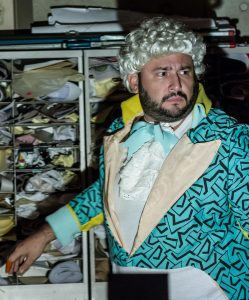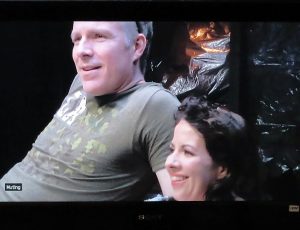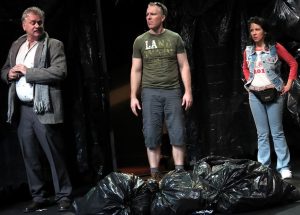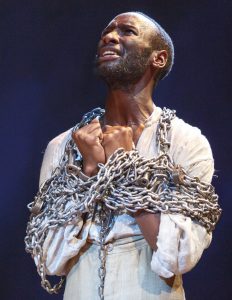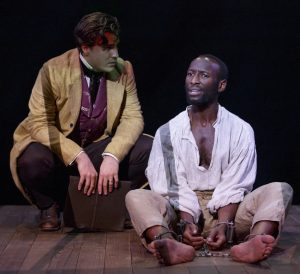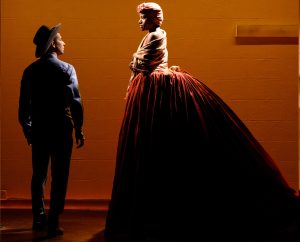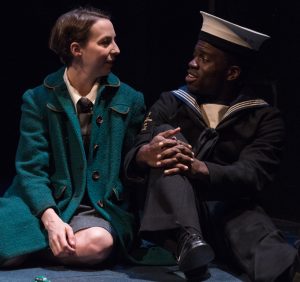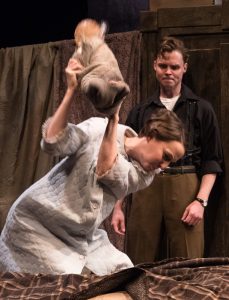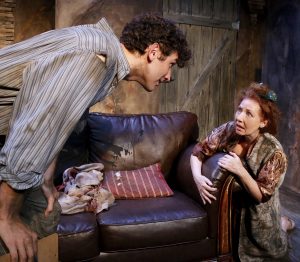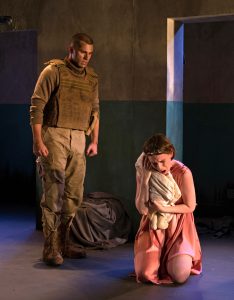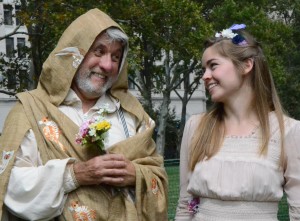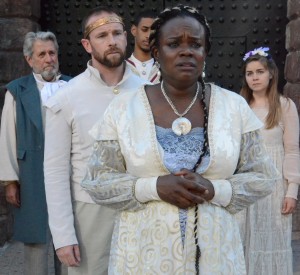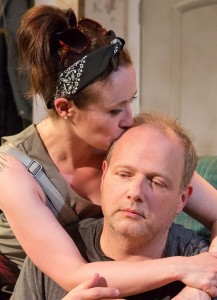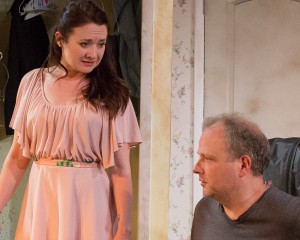Any time theater requires backstory and more research after the curtain drops, it dances a fine line between “Wow, that was interesting. I want to know more” (if you’re lucky) and (more often than not) “What the hell did I just see?” Little Lord is a Brooklyn-based company whose previous works have been praised as “scrappy creative brilliance” or “fearless in ... weirdness.” Now Is the Time. Now Is the Best Time. Now Is the Best Time of Your Life is its latest undertaking, and the show clearly falls in the second category—fearless and weird.

The Little Lord production team sets the tone for a fun and crazy evening with free pickles and coleslaw, offering $4 beer by folks dressed like deli workers and a Mistress of Ceremonies, straight out of Hairspray, even before the “curtain” goes up. Truth be told, the only thing that resembles a curtain is an iridescent panel of foil strips at the back of the stage. Just in time for Halloween, Now Is the Time is a perfect occasion to reimagine Washington Irving’s story of Rip Van Winkle, provided you are one of the few who remembers it! Between the Diedrich Knickerbocker character, a Rip Van Winkle character (oddly, played by a woman), six actors dressed up as freaky yard gnomes, and that Mistress of Ceremonies in a lime-green, pleated baby-doll dress (who later appears as Beelzebub), there is still never enough story to know which end is up. The six yard-gnome characters, who appear as if to taunt Knickerbocker, often repeat lines in unison from some of Knickerbocker’s books. Near the end, they return in white clothes and colorful knee-high socks, sporting black dunce caps (Karen Boyer did the wildly eccentric costumes) and carrying small, wooden children’s chairs. It is all just odd and disjointed.
The set design by Peiyi Wong resembles something out of Hoarding: Buried Alive on The Learning Channel. Stacks and stacks of books, a mountain of lawn chairs and beach balls, leftover Christmas lights, and an old library card catalog are just a few items that fill the stage. If you knew how Irving came to create the Rip Van Winkle character—who slept through the American Revolution—to somehow figure out this Rip Van Winkle awakens in the Catskills somewhere near Grossinger’s, the set might make sense. Now Is the Time has a mountain of missing information, and one more prop isn't going to help.
Director Michael Levinton, who also takes on the lead role of Knickerbocker, has a vision for Now Is the Time that never quite translates across the footlights. As Knickerbocker, he is outrageously quirky, and his delivery engaging. Written by Levinton, Laura von Holt, and Little Lord, the play tosses out interesting snippets of New York history like popcorn, but the story never develops beyond witnessing the madness of a man who dresses like a homeless King George, his nonsensical interaction with Rip Van Winkle, or his hiding from his loud, obnoxious wife who looks more like she should be singing, “Welcome to the ’60s.”
Now Is the Time features Kaaron Briscoe, David GR Brummer, Avi Glickstein, Fernando Gonzalez, Sauda Jackson, Polly Lee, Ry Szelong, and Morgan Lindsey Tachco. Each of them thoroughly embodies the characters they were given, whether they are the deli workers, freakishly odd garden gnomes, or the Children of the Corn with dunce caps. The full production includes very good sound effects by Kate Marvin, along with eerie and complex light design by Marika Kent.
If you are a devotee of Little Lord and company, Now Is the Time may be the ticket to be had. However, without more backstory and some continuity, it’s going to take a lot more than pickles and beer to clear the haze, wicked garden gnomes notwithstanding.
Now Is the Time. Now Is the Best Time. Now Is the Best Time of Your Life plays through Nov. 5 at the Abrons Arts Center (466 Grand St. at Pitt Street) on the Lower East Side. Evening performances are at 7:30 p.m. Wednesday through Saturday; matinees are at 2:30 p.m. Saturdays. Tickets are $25. For tickets and more information, visit abronsartscenter.org.






